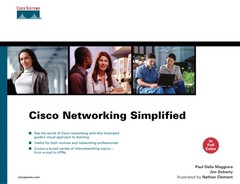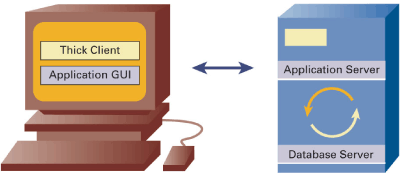Data centers are centralized locations where companies house their business-critical network and server resources. Data centers provide secure centralization of corporate computing resources. Mainframes, application and web servers, data storage, secure printers, WAN aggregation, Internet connectivity, and network core switches are examples of devices that are commonly located in the data center. IT functions, such as network and server operations and support, generally sit near the data center. Satellite data centers provide regional services as well as disaster recovery for the primary data center.
Having these resources centrally located provides administrative benefits but also presents network-design challenges. Whether accessing a server in the data center, exchanging files with a remote office worker, or accessing the Internet, most network activity passes through the data center at some point. Additionally, the data center houses much of the company’s critical data and computing resources. High-bandwidth networking and business-resiliency measures become critical design factors in providing smooth and reliable services.
The primary components of a data center network include some or all of the following:
Campus
Private WAN
Remote access
Internet server farm
Extranet server farm
Intranet server farm
Located in the data center are applications that support business-critical functions as well as network operations and network-based applications, such as IP telephony, video streaming, and IP videoconferencing.
Mainframes and server farms represent the heart of the corporate computing resources. Today’s data-center server-farm design incorporates what’s called an n-tier model. This model describes a method for separating application services into manageable and secure tiers. The n indicates that there can be any number of distinct tiers in the data center, typically three. The purpose for separating these functions into separate tiers is to break the dependence of all functions residing on a single server. Separating the customer-facing applications from the backend servers increases the scalability of the services and eases the management of large-scale server farms.
The first or front tier is the actual application a user might run, such as customer resource management (CRM), enterprise resource planning (ERP), e-commerce, or order processing. The application might or might not be web-based, although newer applications are migrating towards the web. This tier provides the client-facing services.
The next tier, the middle tier, provides the glue between the client-facing application and the backend database and storage servers. Typically, these middle-ware applications provide the business logic that maps corporate data to how a company operates.
The final tier, the back end, contains all the databases, storage, and raw data to be shared with the various applications.
These server farms need a network infrastructure that supports them. Although the growth and design of data centers tend to happen gradually over time, what evolves is a layered approach in which the data-center network is divided into distinct functions. These layered functions include the following:
Aggregation—. Connects the data center to the corporate backbone network.
Front end—. The servers that users interact with.
Application—. The servers running code that glues the front-end applications to the back-end data and reflects the business processes in how the data is used. Also referred to as middleware or business-logic software.
Back end—. Where data is stored, typically in relational database systems.
Storage—. The actual storage devices in which data is stored.
Data-center network transport—. High-speed optical networking that facilitates the sharing of data between distributed data centers. Larger companies implement distributed data centers to provide redundancy in case a server farm or entire data center goes offline.
In each case, the network must provide the infrastructure, security, and management to accommodate the requirements for each particular layer:
High availability—. Access to data center applications, data, and networking services must continue in the event of a device or network failure.
Scalability—. Because servers are centralized in the data center, the network must be able to handle the sheer amount of traffic from corporate users to the central location, as well as server-to-server traffic. Additionally, data center services must be able to scale to multiple locations when distributed data centers are needed.
Security—. Data center devices must be physically secure, and the data and applications must be protected from internal and external threats.
Management—. The IT staff monitors, configures, and troubleshoots network and server resources.




